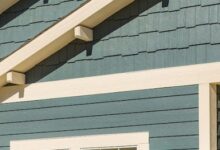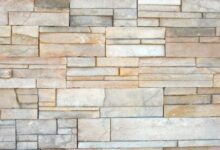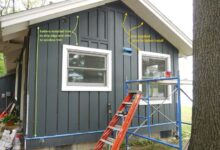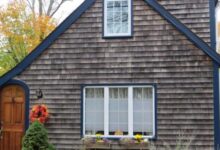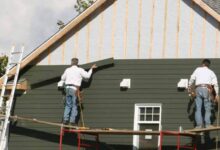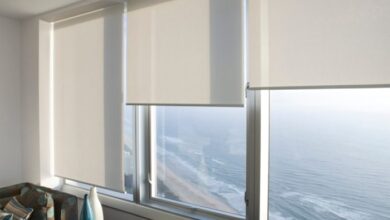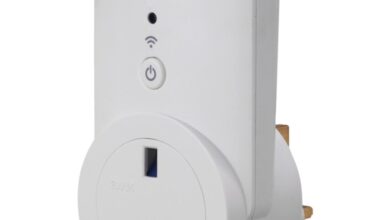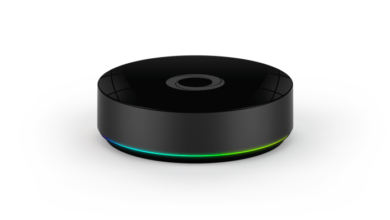Sustainable Siding Materials Eco-Friendly Choices
Sustainable Siding Materials are revolutionizing the construction industry, offering homeowners and builders a chance to create beautiful, durable homes while minimizing their environmental footprint. Forget the outdated image of environmentally friendly options meaning sacrificing style or durability; today’s sustainable siding boasts stunning aesthetics and exceptional longevity. From responsibly sourced wood to innovative recycled plastics, the choices are diverse and exciting, each offering a unique blend of performance and sustainability.
This exploration delves into the diverse options available, examining their lifecycle impacts, cost-effectiveness, and design potential, empowering you to make informed decisions for a greener future.
We’ll dissect the environmental implications of each material, comparing carbon footprints and resource depletion. Discover how to perform a lifecycle assessment, calculate embodied carbon, and understand the long-term cost implications, including potential government incentives. We’ll also explore the aesthetic versatility of these materials, showcasing how they can enhance the visual appeal of any building, and provide practical guidance on installation, maintenance, and future trends shaping this evolving field.
Types of Sustainable Siding Materials
Choosing sustainable siding for your home is a significant decision impacting both the environment and your property’s longevity. The right material can significantly reduce your carbon footprint and enhance your home’s curb appeal, offering a long-term investment in both aesthetics and environmental responsibility. Let’s delve into the specifics of several eco-conscious options.
Sustainable Siding Material Comparison
The following table provides a detailed comparison of various sustainable siding materials, considering their source, manufacturing processes, lifespans, environmental impact, and maintenance needs. Understanding these factors is crucial for making an informed choice that aligns with your values and budget.
| Material | Source & Manufacturing | Lifespan (Years) | Environmental Impact & Maintenance |
|---|---|---|---|
| Wood (e.g., Cedar, Redwood) | Harvested from sustainably managed forests; minimal processing for some types. Others may involve treatments for pest resistance and weatherproofing. | 30-50+ (depending on species, climate, and maintenance) | Relatively low carbon footprint if sourced responsibly; susceptible to rot, insect damage, and requires regular maintenance (staining, sealing). Proper disposal or repurposing is important at end-of-life. |
| Fiber Cement | Manufactured from cement, wood fibers, and other additives; high-energy process. | 50-80+ | Higher carbon footprint due to cement production; resistant to rot, insects, and fire; requires minimal maintenance, typically just occasional cleaning. |
| Recycled Plastic | Manufactured from recycled plastics (often post-consumer); energy-intensive process, but utilizes waste materials. | 30-50+ | Reduces plastic waste; durability varies depending on the specific composition; relatively low maintenance; end-of-life recycling can be challenging. |
| Metal (e.g., Aluminum, Steel, Zinc) | Manufactured from mined ores; energy-intensive process, but highly durable and recyclable. | 50-100+ | High carbon footprint due to mining and manufacturing; highly resistant to rot, insects, and fire; requires minimal maintenance; excellent recyclability at end-of-life. Consider the embodied carbon in production. |
Environmental Impact Considerations
The environmental impact of siding materials extends beyond the initial manufacturing process. Factors like transportation, installation, and end-of-life disposal all contribute to the overall carbon footprint. For example, wood siding from a local source has a smaller carbon footprint than wood shipped across continents. Similarly, the recyclability of metal siding significantly reduces its long-term environmental impact compared to materials with limited recycling options.
Choosing locally sourced materials whenever possible can minimize transportation emissions.
Durability and Maintenance Requirements
Durability and maintenance needs significantly impact the long-term cost and environmental footprint of siding. Materials like fiber cement and metal require minimal maintenance, reducing the need for frequent repairs or replacements. However, wood siding, while aesthetically pleasing, necessitates regular maintenance to prevent damage from rot, insects, and weathering. The initial cost of a low-maintenance material may be higher, but the reduced long-term maintenance costs can offset this.
For instance, a home with metal siding might require less frequent painting compared to wood siding, thus reducing the environmental impact associated with paint production and application.
Lifecycle Assessment of Sustainable Siding
Choosing sustainable siding isn’t just about the initial purchase; it’s about understanding the material’s entire journey, from its origin to its eventual disposal. A comprehensive lifecycle assessment (LCA) provides a crucial framework for evaluating the true environmental impact of different siding options, helping homeowners and builders make informed decisions that minimize their carbon footprint. This analysis goes beyond simply looking at the raw materials; it encompasses every stage of the product’s life, offering a holistic perspective on sustainability.A robust lifecycle assessment framework should systematically evaluate each stage of a sustainable siding material’s life.
This includes the extraction and processing of raw materials, manufacturing, transportation, installation, maintenance, and finally, disposal or recycling. Each stage contributes to the overall environmental burden, encompassing factors like energy consumption, greenhouse gas emissions, water usage, and waste generation. By quantifying these impacts at each stage, we can compare the overall environmental performance of different siding materials more accurately.
Embodied Carbon Calculation, Sustainable Siding Materials
Embodied carbon, a key metric in LCA, represents the total greenhouse gas emissions associated with a product throughout its lifecycle. Calculating this requires a detailed accounting of emissions at each stage. For example, the embodied carbon of wood siding would consider emissions from forestry practices (including deforestation and transportation of logs), milling, treatment (if any), transportation to the building site, and finally, the eventual disposal or reuse of the wood.
Similarly, for fiber cement siding, the calculation would include emissions from cement production (a significant source of CO2), the manufacturing process, transportation, and end-of-life management. A comprehensive assessment would use industry-standard methodologies and data, ensuring accuracy and comparability across different materials. The accuracy of the calculation relies heavily on the availability of reliable data for each stage.
Embodied Energy and Carbon Footprint Comparison
The following table compares the embodied energy and carbon footprint of three common sustainable siding materials: wood, fiber cement, and recycled plastic. These figures are estimates and can vary depending on factors such as material sourcing, manufacturing processes, and transportation distances. It’s crucial to remember that these are simplified examples, and a more precise assessment would require specific data for each individual product and its supply chain.
| Material | Embodied Energy (MJ/m²) | Embodied Carbon (kg CO2e/m²) |
|---|---|---|
| Wood (FSC certified) | 50-100 | 5-15 |
| Fiber Cement | 150-250 | 20-40 |
| Recycled Plastic | 75-150 | 10-25 |
Note: These values are estimations and can significantly vary depending on specific manufacturing processes, transportation distances, and raw material sources. Always consult with product-specific Environmental Product Declarations (EPDs) for the most accurate data.
Cost-Effectiveness and Economic Considerations
Choosing sustainable siding isn’t just about environmental responsibility; it’s a smart financial decision that can significantly impact your home’s value and long-term costs. While initial investment might seem higher for some eco-friendly options, the long-term benefits often outweigh the upfront expense, leading to substantial savings and a positive return on investment. This section will delve into a detailed cost comparison of various sustainable siding materials, explore potential government incentives, and examine the overall return on investment.
A key factor in determining the overall cost-effectiveness of sustainable siding lies in comparing initial purchase prices with projected long-term maintenance and repair expenses. Materials with longer lifespans and lower maintenance requirements can ultimately prove more economical over time, despite potentially higher upfront costs.
Initial and Long-Term Costs of Sustainable Siding Materials
The following table provides a comparison of the estimated initial costs and long-term maintenance needs for several popular sustainable siding options. Remember that these figures are estimates and can vary based on factors like material quality, labor costs in your region, and the size of your home. Always obtain multiple quotes from reputable contractors before making a final decision.
| Siding Material | Initial Cost (per sq ft, estimate) | Estimated Lifespan (years) | Annual Maintenance Cost (estimate) |
|---|---|---|---|
| Reclaimed Wood | $8-$15 | 50-75+ | Low ($0.10-$0.25) |
| Fiber Cement | $6-$12 | 50-80 | Low ($0.05-$0.15) |
| HardiePlank (Fiber Cement) | $7-$14 | 50-80 | Low ($0.05-$0.15) |
| Engineered Wood | $5-$10 | 30-50 | Medium ($0.25-$0.50) |
| Bamboo | $4-$8 | 25-40 | Medium ($0.20-$0.40) |
Government Incentives and Rebates
Many governments offer financial incentives to homeowners who choose energy-efficient and sustainable building materials. These incentives can significantly reduce the initial cost of sustainable siding. For example, some states and municipalities provide tax credits or rebates for installing energy-efficient siding that improves insulation and reduces energy consumption. Contact your local government agencies or energy companies to inquire about available programs in your area.
Eligibility criteria and rebate amounts vary depending on location and specific materials.
Consider the case of California, where various programs have offered rebates for energy-efficient home improvements, including siding upgrades. These rebates have sometimes covered a significant portion of the total project cost, making sustainable options more financially accessible. Similar programs exist in other environmentally conscious regions.
Return on Investment (ROI) of Sustainable Siding
The ROI of sustainable siding extends beyond simple cost savings. Energy-efficient siding materials can lower your heating and cooling bills, leading to long-term cost reductions. Furthermore, homes with sustainable features, including eco-friendly siding, often command higher resale values in the real estate market. Buyers are increasingly prioritizing energy efficiency and environmental sustainability when making purchasing decisions. This increased property value represents a significant return on your initial investment.
For instance, a study by the National Association of Realtors (NAR) showed a strong correlation between energy-efficient home features and higher sale prices. Homes with features like high-performance siding often sell faster and at a premium compared to similar properties without such upgrades. This illustrates the tangible financial benefits of choosing sustainable siding materials, showcasing a strong return on investment beyond mere cost savings.
Aesthetic and Design Aspects: Sustainable Siding Materials
Sustainable siding doesn’t mean sacrificing style; in fact, it opens up a world of design possibilities. The inherent beauty of natural materials, combined with innovative manufacturing techniques, allows for a wide array of aesthetic choices that can complement any architectural style and enhance a home’s curb appeal. The visual impact of sustainable siding extends beyond mere attractiveness; it contributes to a building’s overall character and value, reflecting a commitment to both environmental responsibility and sophisticated design.The visual appeal of sustainable siding is multifaceted, impacting everything from the initial impression to the long-term aesthetic integrity of the structure.
The right choice can elevate a home’s architectural style, create a cohesive and harmonious exterior, and increase its market value. Moreover, the longevity and low-maintenance nature of many sustainable options contribute to a consistently appealing façade, minimizing the need for frequent repairs or replacements.
Architectural Styles and Sustainable Siding Materials
The versatility of sustainable siding materials allows for seamless integration into diverse architectural styles. Choosing the appropriate material is key to achieving a cohesive and visually stunning result. Consider these examples:
- Reclaimed Wood Siding and Farmhouse Style: The rustic charm of reclaimed wood pairs perfectly with the classic simplicity of farmhouse architecture. The natural variations in color and texture add character and warmth, complementing the often-seen neutral palettes and exposed beams of this style. Imagine a deep brown reclaimed wood siding, showcasing the natural grain and knots, against a backdrop of white trim and a gabled roof.
- Fiber Cement Siding and Modern Architecture: Fiber cement’s clean lines and smooth finish are ideal for modern designs. Its ability to mimic the look of other materials, such as stucco or metal, adds to its adaptability. A sleek, gray fiber cement siding on a minimalist home with large windows and geometric shapes creates a sophisticated and contemporary aesthetic. The subtle texture provides visual interest without overwhelming the clean lines of the structure.
- Bamboo Siding and Tropical/Asian-Inspired Designs: The warm tones and natural texture of bamboo siding lend themselves beautifully to tropical and Asian-inspired architectural styles. The vertical lines of bamboo create a sense of height and elegance, often seen in open-plan designs with expansive verandas and natural elements. Imagine a light golden bamboo siding complementing a thatched roof and expansive windows, creating a serene and tranquil atmosphere.
Color, Texture, and Finish Options
The range of colors, textures, and finishes available for sustainable siding materials is surprisingly broad, offering designers ample opportunities for creative expression.
- Reclaimed Wood: Offers a wide spectrum of natural colors, from light tans and grays to deep browns and reds, with varied textures depending on the wood type and its history. Finishes can range from natural, oiled looks to more weathered, grayed appearances, enhancing its rustic appeal.
- Fiber Cement: Available in a wide array of colors, mimicking the look of wood, stucco, or brick. Textured finishes can simulate wood grain or other natural materials, providing a versatile and durable option. A smooth finish offers a modern, clean aesthetic, while a textured finish can add visual depth and interest.
- Bamboo: Typically presents a warm, golden hue, although treatments can darken or lighten the color. The inherent texture of bamboo is often retained, adding a unique visual appeal. Finishes can enhance the natural color or add a protective layer, maintaining its beauty and durability.
Enhancing Building Aesthetics with Sustainable Siding
The visual impact of sustainable siding is not limited to its material properties; it also involves careful consideration of the overall design. The choice of siding significantly influences the building’s character and its ability to integrate harmoniously with its surroundings. A well-chosen sustainable siding material can dramatically improve a building’s aesthetic appeal, contributing to its overall charm and market value.
For instance, the use of reclaimed wood can create a sense of history and character, while fiber cement offers a sleek, modern look. Bamboo siding can add a touch of exotic elegance, while sustainably harvested cedar provides a classic, natural beauty. The interplay between the siding’s color, texture, and the building’s architectural style creates a cohesive and visually pleasing result.
Careful consideration of these aspects is essential in creating a building that is both environmentally responsible and aesthetically pleasing.
Installation and Maintenance Procedures
Sustainable siding offers long-term benefits, but proper installation and maintenance are crucial to realizing its full potential. Ignoring these steps can lead to premature degradation, compromising both the aesthetic appeal and the environmental advantages of your choice. This section details best practices for installation and upkeep, ensuring your sustainable siding remains a valuable asset for years to come.
Installing Fiber Cement Siding
Fiber cement siding, a popular sustainable option, requires careful handling due to its weight and fragility. Installation typically begins with preparing the wall surface, ensuring it’s clean, dry, and free of any loose material. This foundational step prevents issues later on. Next, a weather-resistant barrier is installed, acting as a shield against moisture. This is crucial for the longevity of the siding.
Then, the siding panels are affixed, starting from a corner and working your way across. Each panel should be secured with appropriate fasteners, spaced evenly to avoid cracking. Finally, trim and caulking complete the installation, sealing gaps and enhancing the aesthetic finish. Safety precautions throughout the process are paramount; using appropriate safety gear, like gloves and eye protection, is non-negotiable.
Installing Reclaimed Wood Siding
Reclaimed wood siding offers a unique aesthetic and environmental benefit, but its installation requires specific considerations. Before installation, inspect each piece for damage and treat it with a suitable weather sealant. This preparation step is vital to protecting the wood from the elements and extending its lifespan. The installation process itself is similar to other siding types, involving securing the boards to the prepared wall using appropriate fasteners.
However, reclaimed wood often requires more precise cuts and adjustments due to variations in size and shape. Proper spacing between boards is essential to allow for expansion and contraction due to weather changes. Maintaining consistent spacing ensures the longevity of the installation and its aesthetic appeal. Finally, applying a protective finish after installation will further enhance its durability.
Cleaning and Maintenance Procedures
Regular cleaning and maintenance are vital for preserving the appearance and lifespan of any sustainable siding. For fiber cement siding, a simple wash with water and a soft-bristled brush is usually sufficient. Stubborn stains can be tackled with a mild detergent solution, but avoid harsh chemicals that can damage the surface. Reclaimed wood siding, on the other hand, may require more specialized care.
Regular brushing to remove debris is essential. A periodic application of a wood sealant will protect it from the elements and prevent damage. For both types, inspecting the siding regularly for any signs of damage or deterioration is crucial for proactive maintenance.
Repairing and Replacing Damaged Sections
Damage to sustainable siding can occur from various causes, ranging from impacts to weathering. Repairing minor damage, like small cracks or scratches, often involves using appropriate fillers and sealants. Larger sections of damage may require replacement. When replacing sections, ensure the new pieces match the existing siding in color and texture. The replacement process generally involves carefully removing the damaged section, ensuring the surrounding area remains intact, and installing the new piece using the same methods as the original installation.
Having the right tools, such as a pry bar, saw, and appropriate fasteners, is crucial for a successful repair or replacement.
You also can understand valuable knowledge by exploring Home Security Automation.
Future Trends and Innovations
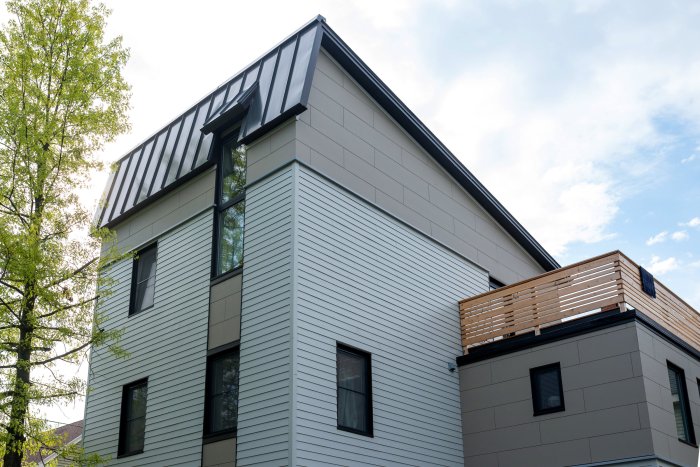
The sustainable building materials sector is experiencing a period of rapid evolution, driven by increasing environmental concerns and advancements in material science. This translates into exciting new possibilities for sustainable siding, pushing beyond current limitations in performance, aesthetics, and environmental impact. We’re seeing a shift towards materials that not only look good but also contribute positively to the planet’s health.The future of sustainable siding hinges on several key factors, including the integration of innovative technologies and the wider adoption of eco-friendly production methods.
This will lead to a broader range of choices for homeowners and builders seeking environmentally responsible solutions. We can expect to see significant changes in both the materials used and the methods of manufacturing and installation.
Bio-Based Materials and Recycled Content in Future Siding Products
The incorporation of bio-based materials and recycled content represents a significant opportunity to reduce the environmental footprint of siding. This approach aligns with the growing demand for products with a lower carbon footprint and reduced reliance on virgin resources. Several companies are already exploring the use of rapidly renewable resources like bamboo and hemp fibers, demonstrating the potential for sustainable alternatives to traditional materials.
Furthermore, incorporating recycled plastics and other waste materials into siding formulations provides a valuable avenue for waste reduction and resource recovery. For example, imagine siding composed of recycled plastic bottles, offering both durability and environmental benefits. This approach not only minimizes landfill waste but also reduces the demand for new plastic production, leading to a significant reduction in greenhouse gas emissions.
Innovative Technologies Enhancing Sustainability and Performance
Several innovative technologies are poised to revolutionize the sustainability and performance of siding materials. These advancements promise to improve durability, energy efficiency, and aesthetic appeal, further driving the adoption of sustainable options.
- Advanced Bio-composites: Research into advanced bio-composites is yielding materials with enhanced strength, weather resistance, and aesthetic versatility. These materials often combine renewable plant fibers with bio-based polymers, resulting in siding that is both durable and environmentally friendly. One example might be a composite material combining rapidly growing bamboo fibers with a biodegradable polymer, offering exceptional strength and a reduced environmental impact compared to traditional vinyl or wood siding.
- Self-Cleaning and UV-Resistant Coatings: The development of self-cleaning and UV-resistant coatings significantly extends the lifespan of siding, reducing the need for frequent replacements and maintenance. These coatings can repel dirt and grime, minimizing the need for harsh cleaning agents, while also protecting the underlying material from the damaging effects of sunlight. This technology reduces material degradation, extending the product’s useful life and minimizing waste.
- Improved Recycling Technologies: Innovations in recycling technologies are enabling the effective recycling of existing siding materials, reducing waste and creating a circular economy for sustainable building products. Advancements in material separation and processing techniques are making it easier and more cost-effective to recover valuable resources from discarded siding, paving the way for truly sustainable product lifecycles.
Lifecycle Assessment and Embodied Carbon
A critical aspect of future sustainable siding will be a comprehensive lifecycle assessment (LCA) considering embodied carbon. This means meticulously tracking the carbon footprint from raw material extraction to manufacturing, transportation, installation, and eventual disposal or recycling. This detailed analysis allows for a thorough comparison of different siding options and identification of areas for improvement. For instance, a siding product made with locally sourced recycled materials and a highly efficient manufacturing process will inherently have a lower embodied carbon compared to a product shipped from overseas using energy-intensive production methods.
This approach ensures that sustainability claims are supported by robust data and promotes informed decision-making.
Epilogue
Choosing sustainable siding isn’t just an eco-conscious decision; it’s a smart investment. By understanding the lifecycle impacts, cost-effectiveness, and aesthetic possibilities of various materials, you can select a siding option that aligns perfectly with your budget, design preferences, and commitment to environmental responsibility. The future of siding is undeniably green, and with careful consideration, you can build a home that’s both beautiful and sustainable, leaving a lighter footprint on the planet without compromising on style or durability.
The potential for long-term cost savings, coupled with the positive environmental impact, makes sustainable siding a winning choice for both homeowners and the environment.
